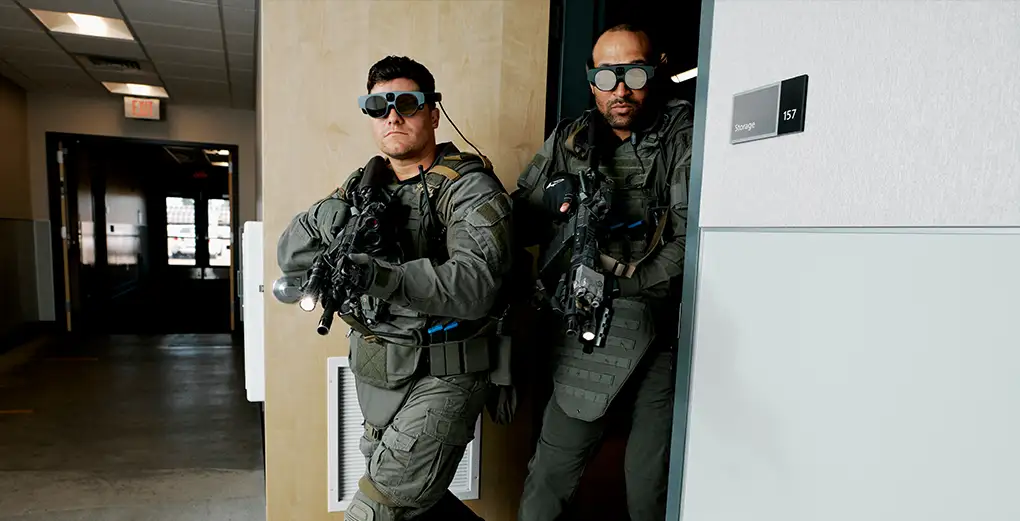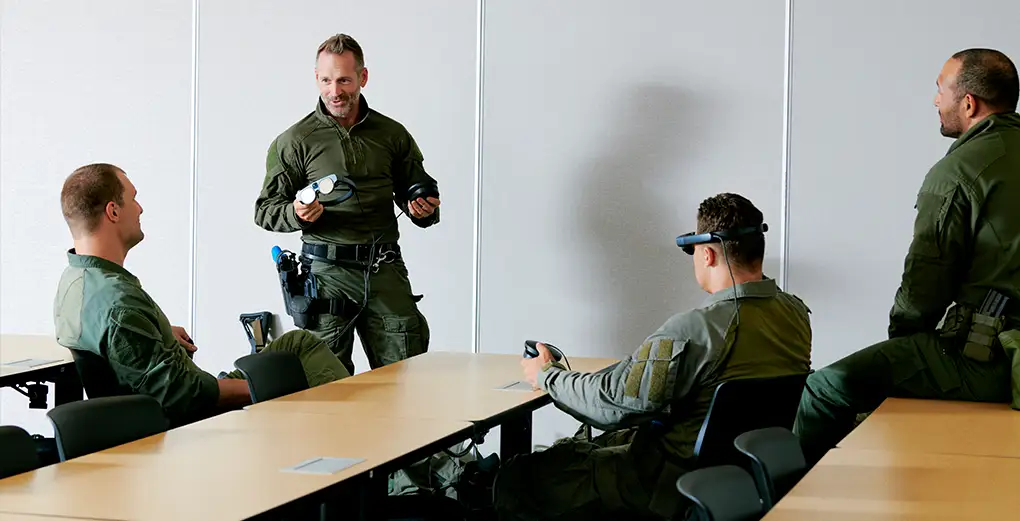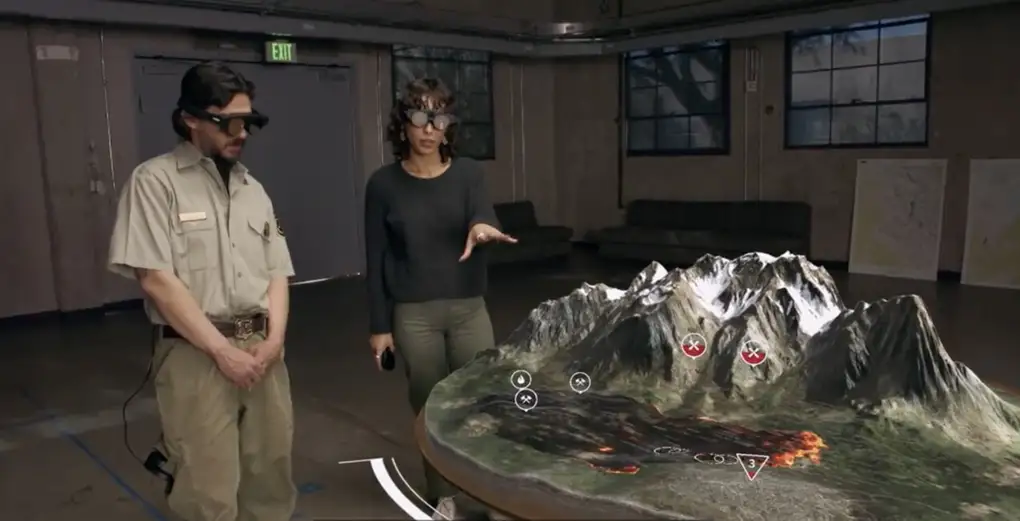The realm of defense training and operations is in a state of constant evolution. As global threats become more sophisticated, so too must our strategies and technologies. In this progressive landscape, Augmented Reality (AR) emerges as a pivotal innovation, reshaping defense mechanisms and strategies to align with the complexities of modern warfare.
Understanding Augmented Reality (AR)

AR technology overlays digital information onto the physical world, enriching our perception of reality. Distinct from Virtual Reality (VR), which creates an entirely immersive digital environment, and Mixed Reality (MR), which blends digital objects with the physical world, AR enhances the user’s real environment with real-time data. This fusion of digital insights with the user’s environment offers unparalleled situational awareness and decision-making tools.
Gaining a strategic advantage
AR offers significant benefits to defense training and operations by augmenting real-world scenarios with digital intelligence and data visualization in real time. In practical terms, this means that personnel receive crucial information about their surroundings, potential threats, and tactical choices directly in their line of sight. Such capabilities elevate situational awareness, accelerate communication, and directly impact decision-making speed and accuracy, which are vital in combat scenarios.
How AR is being used in defense training today

AR offers innovative and cost-efficient means to simulate complex and high-risk combat situations safely. For example, in air defense training exercises, AR can be used to emulate threats. This enables personnel to hone their response tactics in a controlled, yet profoundly realistic environment. Within command and control frameworks, AR provides an enhanced operational picture, facilitating unparalleled coordination and swift decision-making by overlaying critical information directly onto the user’s field of view.
Get Started TodayEnhancing command and control operations

By integrating real-time data directly onto physical environments with AR, command and control functions are greatly enhanced. Collaborating around 3D models and terrain databases with near real-time simulation capabilities means strategic decisions are grounded in comprehensive insight. Research reinforces that AR technology significantly bolsters teamwork and operational efficacy, while reducing the logistical burden of distributed communication and collaboration in complex scenarios.
Cost-effectiveness and safety

AR’s impact on the long-term increase in safety and reduction of training costs is significant. By minimizing dependence on physical equipment and live training environments, AR technology reduces financial and physical risks associated with defense training. This approach leads to less wear and tear on expensive equipment and a lower risk of injury.
Additionally, AR greatly accelerates the training process while improving error rates. Because response data is tracked on an individual basis, after action reviews provide more targeted feedback. This allows for curriculum to be customized and paced at the individual trainee level. And, when viewed in aggregate, can identify areas of improvement for the training program overall.
Get Started TodayAR, VR or MR: When is AR the best immersive solution?
- Simulating dynamic battlefield environments: AR creates the opportunity for realistic combat training, providing increased safety, easy repeatability, and reduced costs. E.g. trainees can assess the situation, deploy troops, and adjust strategies based on real-time information
- Mission planning and briefing: When an eagle-eye view is required, AR is an ideal solution offering real-time, collaborative visualization of terrain, target positions, and potential obstacles. E.g. sand table
- Simulating specific combat scenarios safely: AR enables no-lag interaction with virtual avatars and elements layered seamlessly with the real world. This results in a safer training environment compared to traditional methods, and makes review and repeatability easy.
- Collaborative training, LVC & visualization: AR excels in joint exercises and Live, Virtual and Constructive training, where multiple teams and individuals train in the same physical space with a shared set of data. AR streamlines cross-communication and quickly fosters united coordination, even when widely distributed.
- After Action Reviews (AAR): AR facilitates a more meaningful review of simulated missions by overlaying digital annotations, replays, and analysis tools onto the training environment. This is punctuated by trainee-level biometric data, ensuring precise corrections and crucial long-term improvements.
- Customized training experiences: AR offers customized training experiences by adapting digital information to the user’s physical environment. It has a broad range of applications spanning a wide variety of use cases, with software development solutions ranging from off-the-shelf to fully custom.
Take a technological leap forward today

AR technology experienced a significant advancement with the release of Magic Leap 2 AR glasses. The high-resolution optics, wide field of view, and advanced sensors make this standalone, portable AR headset easy to wear and easy to use. Trainees adapt quickly and learn at an advanced rate compared to traditional training methods. Magic Leap 2’s ergonomic build and light weight also ensures comfort during extended use, making it ideal for lengthy defense training and operations exercises.
Magic Leap 2 in action

With a user-friendly interface, Magic Leap 2 is designed for trainees and instructors, employing intuitive menus for scenario creation, execution, and modification. It’s dynamic dimming technology and spatial audio enhances the realism of training scenarios. And the wide field of view is particularly beneficial for tactical training exercises that demand elevated situational awareness.
Altogether, Magic Leap 2 is the ideal AR solution powering dynamic, immersive training environments that deliver exceptional results in comparison to legacy methods.
The future of AR in defense

Now is the ideal time to integrate AR into your training programs. In defense, this technology brings a future with potential for even more immersive training experiences, enhanced cognitive augmentation, and integration with AI for predictive analytics in synchronization and forecasting of interoperability and awareness. The key to realizing AR’s full potential is in continuous collaboration among technology developers, combat & command development, and defense manufacturers.
Conclusion
AR is at the forefront of a new era in defense strategy and training, providing a crucial advantage essential for modern training environments. By integrating digital enhancements with human skills, AR transforms training practices, fostering smarter, more effective, and efficient preparation methods for defense scenarios.
Discover how AR enhances combat readiness and operational effectiveness, and join the revolution in defense technology by exploring the possibilities with Magic Leap 2.
Get Started Today










